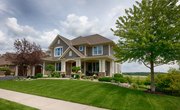
New Jersey, the Garden State, has numerous industries, both large and small: pharmaceutical, manufacturing, information technology, agriculture, financial services and energy, among many others. Yet the state is perhaps best known for its seemingly countless bedroom communities outside of New York City to the north and Philadelphia, which draws from South Jersey. In fact, residential real estate counts among the largest industries in the state.
Within this thriving sector, the conveyance and leasing of multi-family properties occupies a significant percentage. Yet each municipality has its rules regarding how many multi-dwelling units there should be, and where they should be.
Is Multi-Dwelling Housing the Same as an Apartment Building?
Although the question sounds like semantic hair-splitting, there is a meaningful distinction between multi-family properties and apartment communities in New Jersey. Of course, apartment complexes do accommodate multiple residential units and households. Yet the two are categorized differently by most zoning and planning boards in NJ, and by mortgage lenders too.
Multi-dwelling units are ordinarily zoned as residential properties whereas apartment buildings, complexes and communities are treated as commercial parcels by local governments. Indeed, some apartment structures may house businesses as well as living units. In New Jersey, multi-dwelling housing usually means three- to four-family units. Five and over will be ineligible for residential status.
What about a Two-Unit Dwelling?
Again, there is a literal understanding of multiple units versus the recognition by state and municipal governments. Strictly speaking, a duplex contains two units, either side by side or one placed on top of the other. In many cases, the owner lives in one unit while leasing the other to tenants.
On the other hand, the structure may be entirely occupied by renters and owned by an investor. Under New Jersey law, calling a residence "multiple dwelling" requires at least three separate occupancy units.
How to Find Multi-Unit Houses
The fact is that multi-family houses can look very much like single-family residences from the outside. While each unit has a separate entrance, the structure itself may have common entrances and exits. Still, there are often tell-tale signs that are discerned from a drive-by: more than three cars parked consistently overnight, symmetry with regard to window placement and adjacent proximity to known multi-family houses.
Nevertheless, a serious shopper for a multi-unit investment property wants to know not only that more than one household resides there, the serious investor wants to be sure that multiple families are legal.
Multi-dwelling units are ordinarily zoned as residential properties whereas apartment buildings, complexes and communities are treated as commercial parcels by local governments.
Documentation for Multi-Dwelling Units
One might first think to check with a municipal tax assessor's office to confirm how many units a residence possesses. However, New Jersey property tax records do not always specify the number of dwelling units – one to four units are classified as residences, while buildings with five units and above are apartments. Other than the tax assessor, there are nonetheless other public records that indicate the unit number.
One would be the state's Bureau of Housing Inspection, an arm of the NJ Dept. of Community Affairs, Division of Codes and Standards. Three- and four-family homes must be inspected and issued a certificate called a "green card" that is good for five years. This certificate is detailed and conveys the number of legal units per structure.
The best alternative is to work with a real estate agent experienced in multi-family houses. The listing services available to real estate professionals convey updated information on all the properties on the market in the area. This agent is also informed regarding local zoning ordinances, variances and other regulations pertaining to multi-family homes.
References
Writer Bio
Adam Luehrs is a writer during the day and a voracious reader at night. He focuses mostly on finance writing and has a passion for real estate, credit card deals, and investing.

